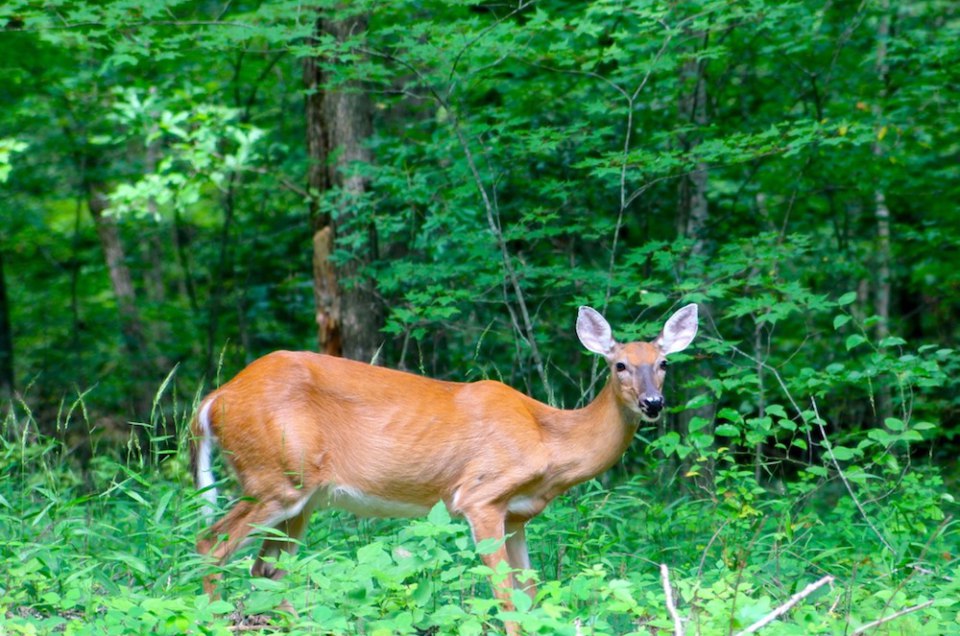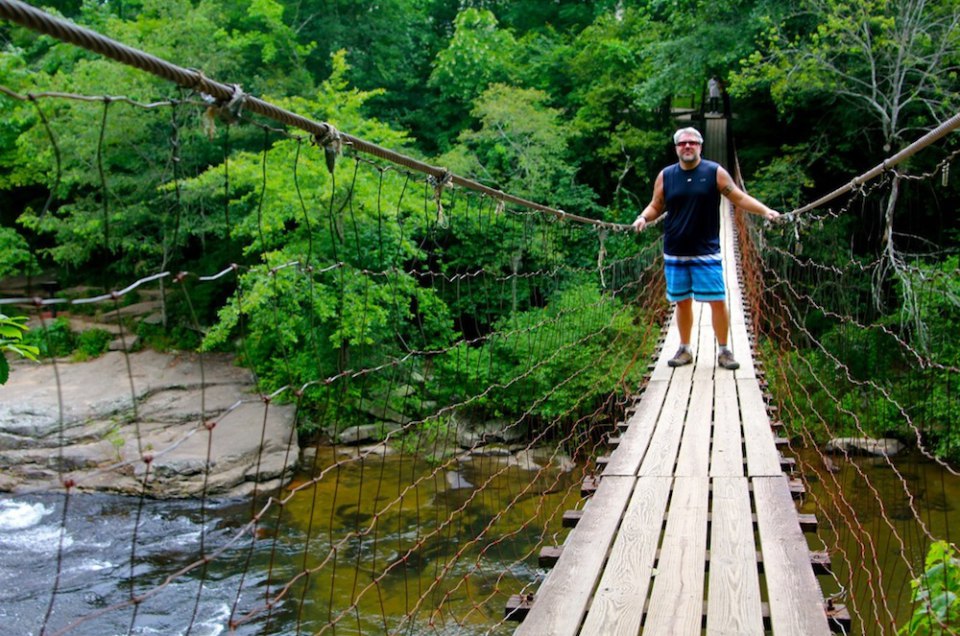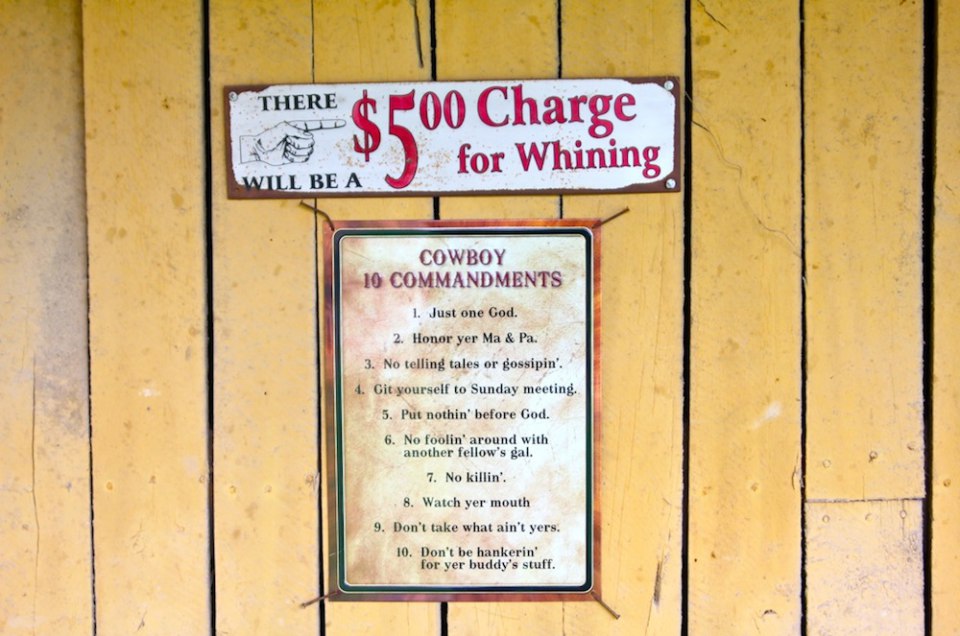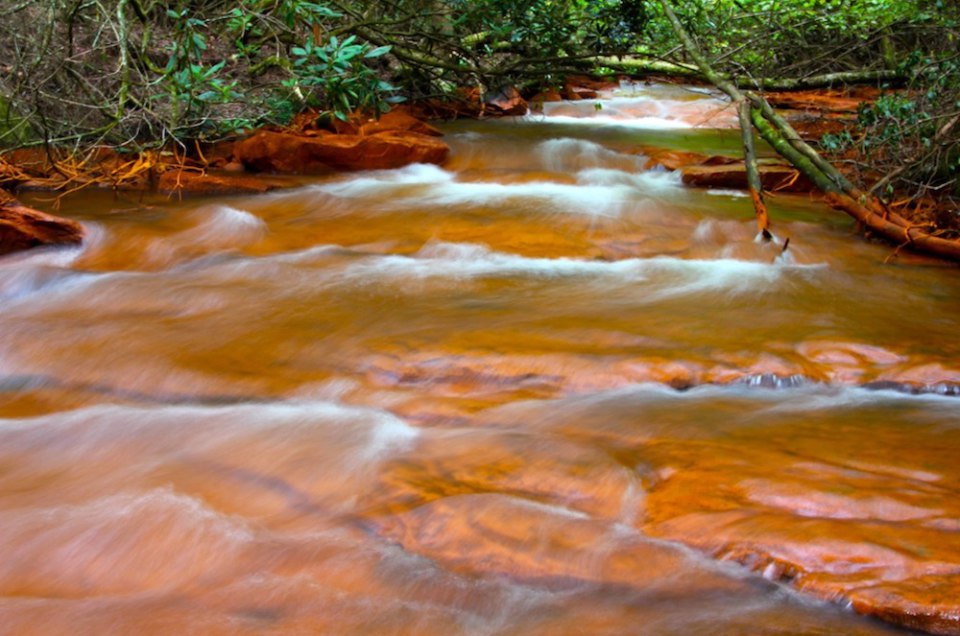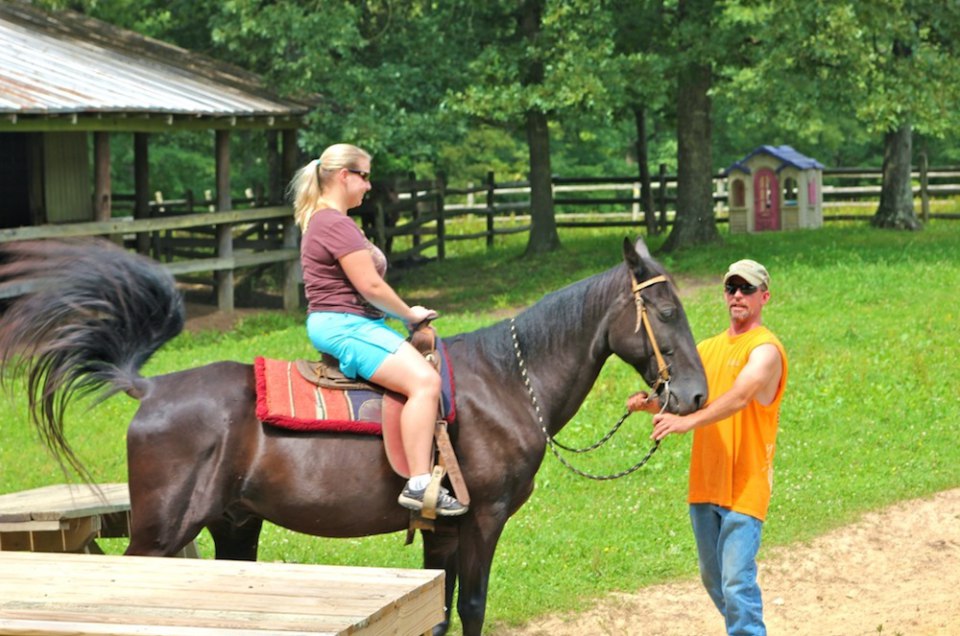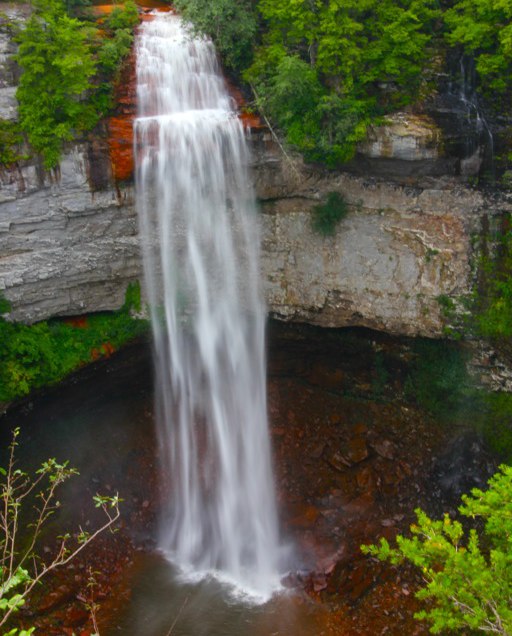Exploring One of East Tennessee’s Greatest Natural Wonders
Although we live on the outskirts of Atlanta, we are not generally fans of spending too much time in cities. So we were delighted to make our way off the beaten path and take the scenic 2-hour drive from Knoxville to Fall Creek Falls State Park.
Located in the center of the Chattanooga-Knoxville-Nashville triangle near the tiny town of Pikeville, the state park occupies 20,000 acres on the upper Cane Creek Gorge, an area known for its impressive geological formations and majestic waterfalls. After making our way through picturesque mountain scenery and vast expanses of pastoral farmland, we checked into the park’s cozy inn, where our room offered excellent views of the tranquil Fall Creek Lake.
We set out immediately upon our arrival to get the lay of the land, driving past lakeside cabins and numerous campgrounds on our way towards the other side of the park. We’d barely been out a few minutes before we started spotting wildlife, including a female deer feeding in the grass right beside the road and a pair of wild turkeys shuffling amidst the underbrush. But we were headed to a rendezvous with a decidedly more domesticated species at the Fall Creek Falls Riding Stables.
We were a bit concerned, as storm clouds thundered off in the distance. But stable guide Jarrod Hankins assured us we’d be fine, so we saddled up on a Tennessee Walking Horse named Peazy and an American Saddle Bred named Bacardi for a gentle 2-mile ride along a backcountry trail.
Before the park was created in 1935, the trail was originally the main road connecting Pikeville with Spencer (around 25 miles away), and Jarrod said it was also part of the Native American Trail of Tears. It wasn’t difficult to imagine wagon caravans slogging their way through this remarkably green wilderness, which teemed with butterflies, dragonflies, turtles, and other wildlife. Even when a light drizzle began to fall, the dense forest canopy kept us mostly dry.
The 45-minute ride was an excellent way to get away from… well, everything, setting a peaceful, soothing tone that would define the rest of our time in the park. And the storm? It settled in over Knoxville, providing an incredible light show that lit up the night sky like a fireworks display from the heavens.
• • • • •
We woke up bright and early the next morning, forgoing breakfast in an effort to beat the heat and hike to a few of the many wonderful waterfalls for which the park is known. You can get decent views of several falls from drive-up overlooks. But for truly spectacular views of some of them, you’ll want to hit the Gorge Trail next to the Nature Center.
The first highlight comes right away as you cross over the Cane Creek Cascades via a swinging bridge that bounces and wiggles with your every step. From there it’s a steady climb up a gradual incline, then around the rim of the Cane Creek Gorge to an overlook that provides perfect views of both Cane Creek Falls (a wide, 85-foot tall plunge waterfall) and Rockhouse Falls (a narrower, 125-foot tall plunge waterfall).
We were clearly the first people on the trail that morning (yay, cobwebs!), but we were rewarded with lots of deer sightings along the way.
Although cautious in our presence, none of them ran as we watched them feeding in the golden morning light. One adorable doe watched us warily as she shyly approached the trail within about 10 feet of me, tiptoed slowly across, then leapt with a bound down the bank on the opposite side and into the woods. She was one of seven deer we encountered during our hike.
Even when there were no deer or waterfalls to be seen, the scenery was spectacular. Rocky Point Overlook provided particularly pleasing views of Cane Creek Gorge, with the green of old growth hardwoods and pines making for striking contrast to the rugged rock formations of the cliffs.
Eventually we made our way down to a creek that ran fast and red with ultisols (a.k.a. red clay soils, which are coming in the southeast). The color is the result of high levels of iron oxide, or rust, which is highly insoluble in water. It stained everything– the rocks, the bank, even the water itself. Though we didn’t know it at the time, this was our first look at Fall Creek.
As the sound of running water gradually became a roar, we rounded the corner to see the falls for which the park is named. Fall Creek Falls, at 256 feet in height, is the tallest free-fall waterfall east of the Mississippi River, and makes for an impressive sight even when it’s not at peak water flow. There’s a short trail leading down to the plunge pool at the base of the falls, but, with hunger setting in and a 1.1-mile hike to the Nature Center, we opted to take a few quick photos and make our way back.
By the time we made it to the Cane Creek Cascades, the day had grown hotter and more visitors were making their way onto the trail. We were hot, sweaty and delighted when we were finally able to strip down to our swimsuits and ease into the cool waters at the base of the falls, taking time to savor a rare moment of relaxation on our action-packed road trip.
We’ve been to many of the state parks in our home state of Georgia, and many others in states throughout the Southeast. But Fall Creek Falls State Park felt special somehow, and we regretted only having 24 hours to explore its many wonders (which also include other falls, hiking trails, caves and more). As we left for the 3-hour drive back to Atlanta, we pledged to return when autumn colors begin to peak, and spend more time enjoying the beauty of Tennessee at its finest.
For more road trip and hiking trails, check out TNVacation.com.
